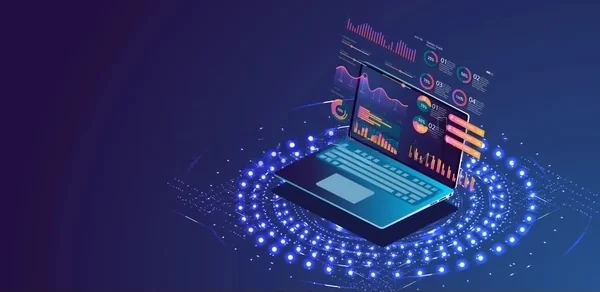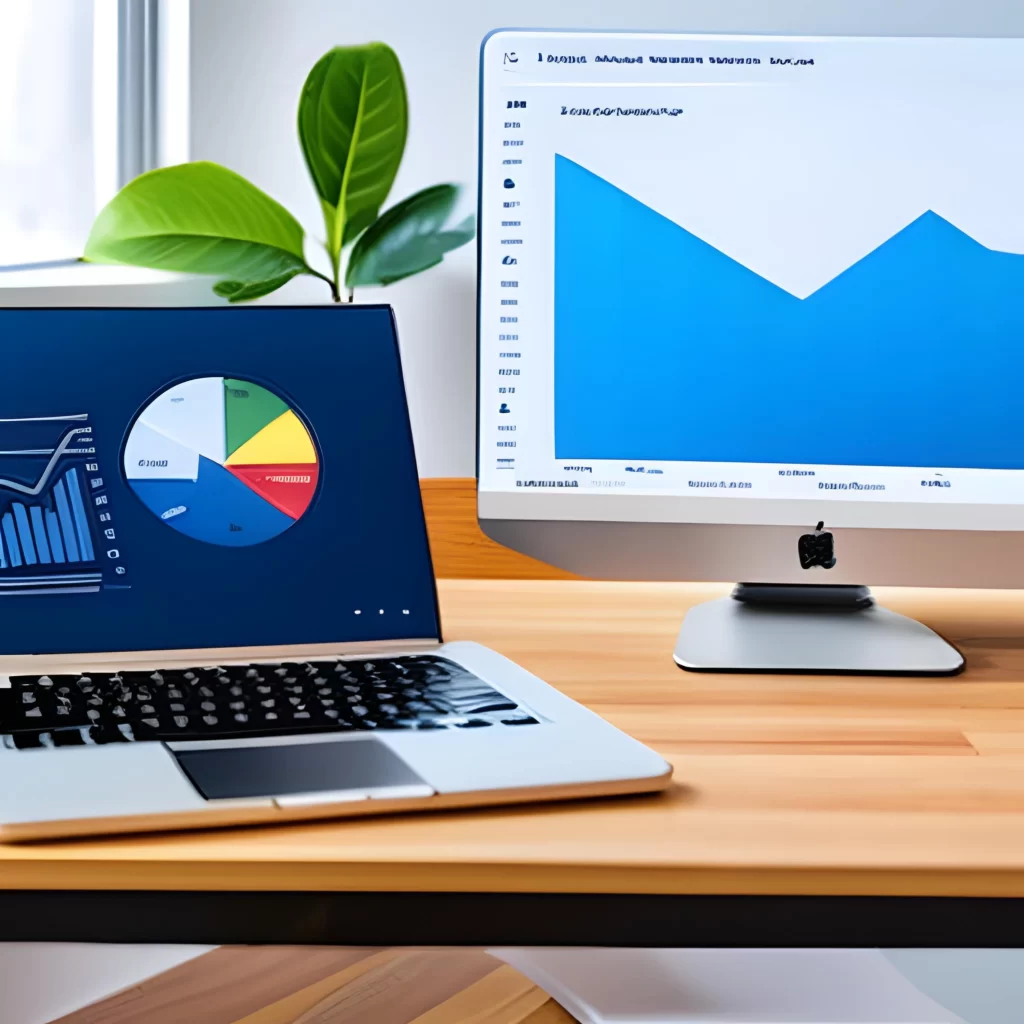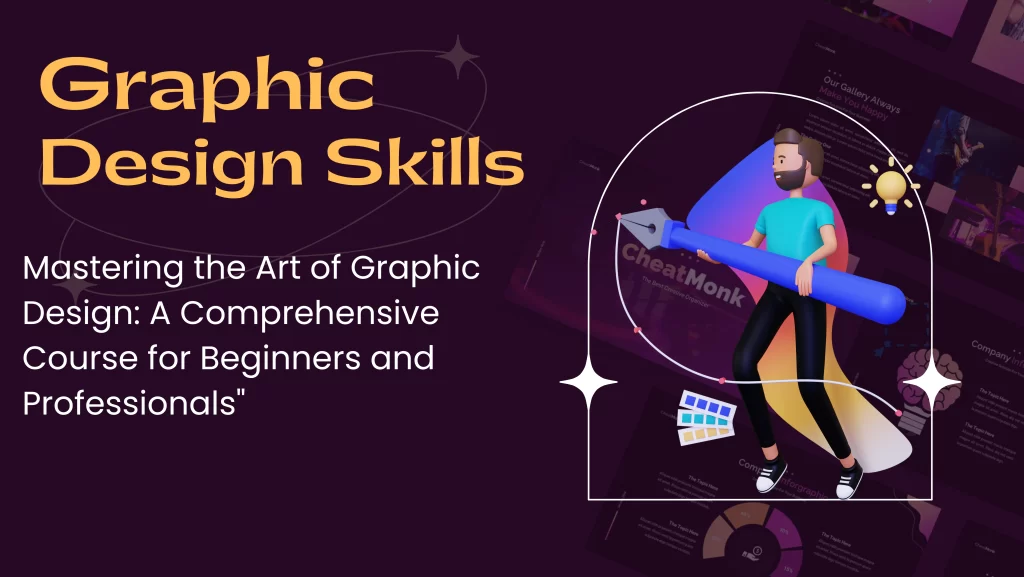Graphic Designing Skills in 2023

Introductiion:
Graphic Designing Skills in 2023 is a craft where professionals create visual and innovative content to communicate messages. By using visual hierarchy and page layout techniques, designers use typography and pictures to connect with users and their specific needs and concentrate on the logic of displaying elements in interactive designs, to enhance the user’s experience. Although working in a digital age means one should work with interactive software, GraphicDesigning still revolves around old principles. As a graphic designer, one should have a team of people who have a better understanding and knowledge of color theory and the right choice of color scheme. Color choices reflect not only on the organization but also on the client’s expectations. One should design with an eye for how elements match the tone.
The Graphic Designer also need to design for the overall effects and should note how they shape users’ emotions as they guide the from, for instance, a landing page to a call to action. Often, graphic designers are involved in motion design for small screens. The company carefully monitors how its work aesthetics match its user’s expectations. They can enhance their design’s usability in a flowing, seamless experience by anticipating the user’s needs and mindsets. With user psychology in mind, it’s very important to stay focused on some especially weighty graphic design considerations. “Graphic Design takes textual and graphical elements and implements them into multiple types of media”, this is said a famous designer. Graphic design can be used by businesses and companies to promote and sell their products via advertisement, websites to communicate complicated information in a digestible way through infographics, or by businesses to develop an identity through branding, among other things.
Basics of Graphic Designing-
For a better understanding, of the meaning of graphic design, it is important to be aware of the elements and rules that make designs. Elements are used in the same or in opposition to one another to create visually striking and impactful designs. These graphic designs include elements such as-
1. Shape
2. Color
3. Texture
4. Size
5. Form
6. line
7. Space
Graphic Designers adhere to the principles of design, which are essentially a combination of guidelines that help to design the achieve effective composition. These basic principles aid in creating balance and consistency for a part of the work. These graphic design principles include-
Contrast
Proportion
Balance
Emphasis
Rhythm
Movements
Types of Graphic Design-
Graphic Designing is composed of many fields and specializations, beginning from print and web design to animation and ongoing graphics. Graphic design offers opportunities and options for every individual of probably any interest.
Some of the most noticed modern graphic design instances stem from enhancements in technology. A little glimpse of some of the types of graphic design are as follows-
. Website Design involves creating engaging and intuitive web pages for users. This includes overall layouts, color schemes, and navigations.
. Motion Graphics Design also known as animation brings visual elements to life, through extraordinary effects, videogames, TV shows, and movies.
. User Experience (UX) Design is focused on ensuring a website or application is simpler and more satisfying to use. This kind of designer emphasizes usage, values, adaptability, and desire.
Elements of Graphic Design-
Elements of art are the basic units of any visual design that form the design’s structure and convey its visual messages. The elements of graphic design are as follows-
Shape – A shape is a two-dimensional defined area created by lines. Various types of shapes include abstract, geometric, and organic shapes all of which are basic elements of design.
Line – The most basic of the design elements. Lines can be straight, curved, thick, thin, two-dimensional, or three-dimensional. A line is simply an element of design that is defined by a point moving in space.
Color – Color is one element that is very important in grabbing attention because there is a psychology behind the feelings that color can evoke. There are 3 main characteristics of color- hue (the color family), value (how light or dark the color is), and saturation (the purity of the color).
Texture – Texture in design refers to how things look like they’d feel if they were touched and felt. For instance, texture can be rough, smooth, glossy, soft, hard, etc. The texture is another element used to draw attention. It can be added to other elements like shapes, colors, types, and images.
Space – Texture in design refers to how things look like they’d feel if they were to be touched. For example, texture can be rough, smooth, glossy, soft, hard, etc. The texture is another element used to draw attention. It can be added to other elements like shapes, colors, images, and types.
Size – Size is simply how small or large something is. In design, size is used as an indication of importance and it can also create visual interest in a design by using contrasting sizes.
Typography – Typography is the art of arranging type. This one is critically important as it can greatly affect the design’s messaging. Different weights (bold, regular, or light), combined with varied sizing, colors, and spacing, can add power to the concept the designer is trying to communicate.
Principles of Graphic Designing-
The principles of design suggest how the designer should best arrange the various components of a page layout to ensure the elements of the overall design are connected. The principles of design include the following:
1. Balance – Achieving visual balance in graphic design is done by using symmetry and asymmetry. This is achieved by balancing the design in weight – meaning shapes, lines, and other elements are distributed evenly. So even if the two sides of the design aren’t the same, they have similar elements. Balance is important because it provides structure and stability to a design.
2. Alignment – Alignment is about keeping the design organized. All aspects of the design should be aligned with the top, bottom, center, or sides to create a visual connection between the elements.
3. Proximity – Proximity creates a visual relationship between the elements of the design. It minimizes clutter, increases viewer comprehension, and provides a focal point for viewers. It doesn’t necessarily mean similar elements need to be put right next to each other, it just means they should be connected visually.
4. Repetition – Once you’ve chosen how to use your elements, repeat those patterns to establish consistency throughout the design. This repetition ties together individual elements and strengthens the design creating a feeling of organized movement.
5. Contrast – Contrasting is used to emphasize certain aspects of the design. Using contrast allows you to stress differences between elements, ultimately highlighting the key elements of your design that you want to stand out.s
Top 7 Data Analytics Tools in 2023

Definition-
Top Data Analytics tools in 2023 help individuals and organizations to make sensible data. Data Analysts usually analyze raw data for insights and trends. They utilize various tools and techniques to help organizations make decisions and succeed. Also, data analytics is the process of examining data sets to find trends and draw conclusions regarding the information they
have. In addition to this, data analytics is done with specialized systems and software.
Tools-
1. Domo – The Domo Business Cloud is a low-code data app platform that takes the power BI to the next level to combine all your data and put it to work across any business process or workflow. Reporting and Dashboards create interactive, custom dashboards with ease. Domo is a cloud-based platform designed to provide direct, simplified, real-time access to business data for decision-makers across the company with minimal IT involvement. It is a software-as-a-service (SaaS) venture. Data analytics can help small businesses in several ways. By understanding data analytics, businesses can make better decisions about where to allocate their resources and how to price their products or services. Additionally, data analytics can help businesses identify trends and understand their customer base. Data analytics software can track and analyze data, as well as create reports and dashboards.
2. Python – Python is one of the most powerful Data Analytics tools that are available to the user. It comes with a wide set of packages/libraries. Python is a free, open-source software that can be used for a high level of visualization and comes with packages such as Matplotlib, and Seaborn. Pandas is one of the widely used data analytics libraries that comes with Python. Most programmers prefer to learn Python as their first programming language due to its ease and versatility. It is a high-level, object-oriented programming language. There are many applications of Python across various platforms. Whether we’re browsing through Google, Instagram, or YouTube, each of these applications has made use of Python for its programming needs. Python is useful for web development as it is less time-consuming and has a simple syntax. Python supports several frameworks such as Flask, Django, Falcon, Web2Py, Sanic, Pyramid, and
more. Take up a free online Python for beginners course and upskill today.
3. Tableau – Tableau is a Business Intelligence Tool developed for data analysts where one can visualize, analyze, and understand their data. Tableau provides fast analytics and can explore wide types of data like spreadsheets, databases, and data on Hadoop and cloud services. It is easy to use, as it has a powerful GUI. It can build effective interactive dashboards with less effort. Tableau is a market leader and lets you work on live data rather than spending too much effort on data wrangling. Tableau is always looking to improve its services and has come up with updates to
provide users with smart dashboards, explore data, ease of use, fast analytics, update automatically, and publish a dashboard to share it live on mobile devices or the web. You can take up a free online course on Tableau to enhance your skills with this data analysis tool. The products that are included under Tableau are as follows- Tableau Desktop, Tableau Server, Tableau Online, Tableau Reader, and Tableau Public. Another plus point of using Tableau is that it is free.
4. Power BI – Power BI is yet another powerful business analytics solution by Microsoft. You can visualize your data, connect to many data sources and share the outcomes across your organization. With Power BI, you can bring your data to life with live dashboards and reports. Power BI can be integrated with other Data Analytics Tools, including Microsoft Excel. It offers solutions such as Azure + Power BI and Office 365 + Power BI. This can be extremely helpful to allow users to perform data analysis, protect data across several office platforms, and connect data as well.
Some of the products under Power BI are as follows-
. Power BI Desktop
. Power BI Premium
. Power BI Pro
. Power BI Embedded
. Power BI Mobile
. Power BI Report Server
5. Excel – Microsoft Excel is a simple yet powerful tool for data collection and analysis. It is a part of the Microsoft Office tool suite and is readily available, widely used, and easy to learn. Microsoft Excel can be considered as a great starting point for data analysis. The Data Analytics Tool pack in Excel offers a variety of options to perform statistical analysis of your data. The charts and graphs in Excel give a clear interpretation and visualization of your data. Excel is one the easiest ways to store data, create data visualizations, perform calculations based on data, clean data, and report data understandably. It is a great skill to add to your resume. Excel for beginners is a free online course that you can take up to enhance your knowledge about this data analysis tool.
It offers products in three main categories, namely:
. For Home
. For Business
. For Enterprises
6. Qlik Sense – Qlik Sense is a Top Data Analytics tools in 2023 designed for companies who want to integrate machine learning into their business. Qlik Sense uses machine learning (ML) to assist users in better understanding and utilizing business data. AI-generated analyses and insights, automated creation and data preparation, search and natural language interaction, machine learning, and predictive analytics are just a few of its significant capabilities. Also, it allows all users to explore at their own pace with hyperfast computations that are always in context and at scale. Qlik Sense Desktop is a Windows application that allows users to create visualizations, charts, interactive dashboards, and analytics apps for local and offline usage
7. Looker – Looker is a Top Data Analytics tools in 2023 created for companies wishing to visualize patterns and significant characteristics using data. It is perfect for data exploration and adds value to teams by providing new insights. Because it’s part of the Google Cloud Platform, it’ll work with whatever other tools you’re using. Looker also offers a powerful API that lets you create bespoke apps based on the data it gives. Since it supports several SQL dialects, you can prevent database lock-in and maintain a multi-cloud data environment. A Looker Business Analyst uses Looker daily to create and curate content, develop reports, and use visualizations to represent data. A Business Analyst should be able to use Looker to query data and create actionable metrics, validate data accuracy, and apply procedural concepts to identify error sources








